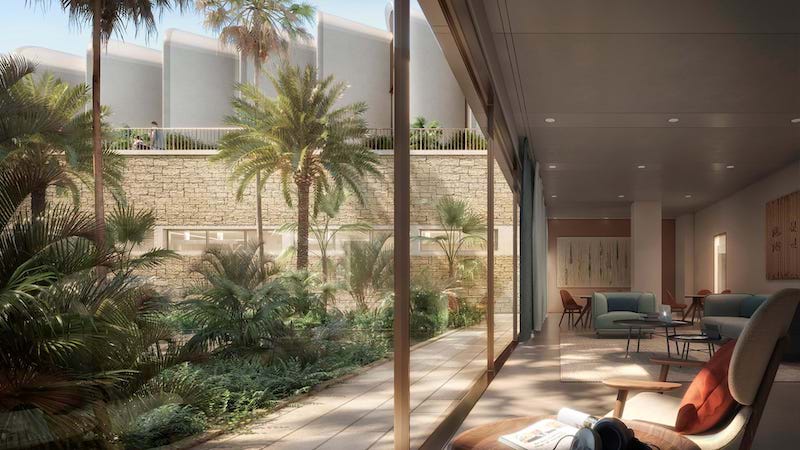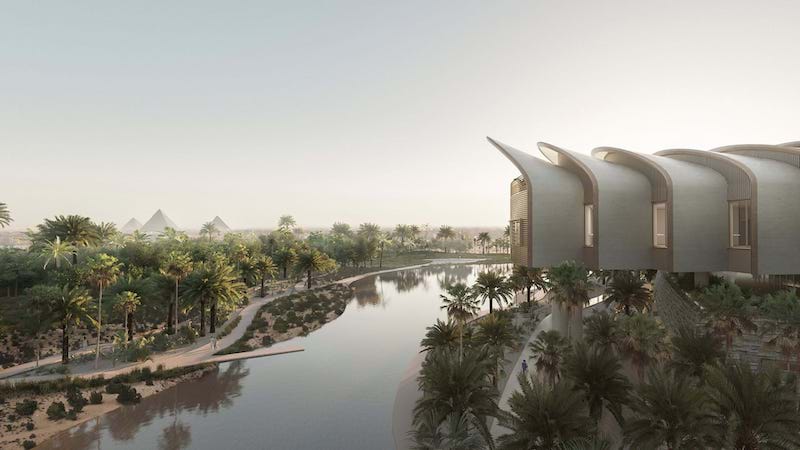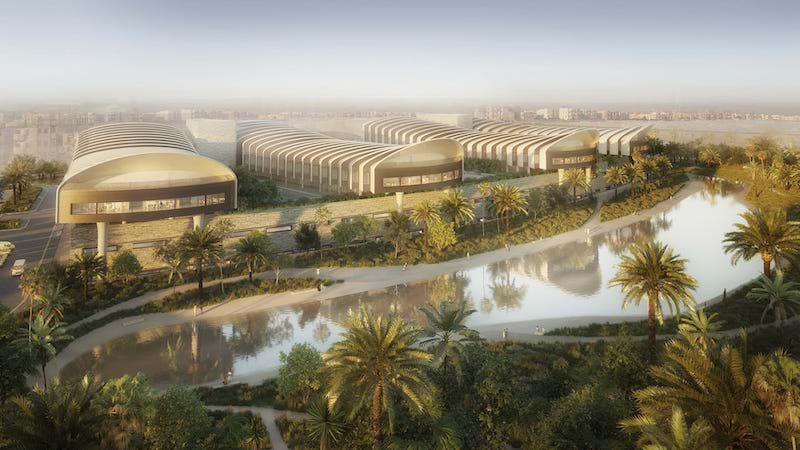The Magdi Yacoub Heart Centre Cairo has begun construction. The project marks the newest outpost of the Aswan Heart Centre founded by Egyptian surgeon Sir Magdi Yacoub and provides free treatment for the people of Egypt and those in sub-Saharan Africa.
The 300-bed hospital has views of the Pyramids of Giza and is set within a verdant landscape with a lake and seeks to optimize the overall patient experience and decrease recovery times. The site of the hospital borders the Zewail City of Science and Technology, forming part of an integrated health and medical research zone.

The ground floor comprises comprehensive diagnosis and treatment facilities, including an accident and emergency department, a large outpatient clinic, and rehabilitative departments. Several courtyards bring natural light into the building and aid orientation. The surgical department and intensive care units are co-located, minimizing the distance between “bed and bench” and maximizing collaboration between researchers and caregivers.
Eight intensive care units on the first floor are designed to optimize recovery. Each patient room on the ground level is oriented so the patients benefit from landscaped views and the newly formed lake on the northern edge. Prefabricated operating theaters feature carefully planned flows to ensure high clinical safety standards. The hospital will also feature support spaces for families, as well as classrooms and educational spaces for medical students. Single and shared patient rooms on the upper floors are sheltered by sculptural shell-like roof structures.

A green terrace on the second floor will provide break-out space for the staff and visitors. The open terrace is interspersed with built spaces containing a large staff canteen, children’s nurse, and other collaborative meeting spaces.
“This is a special project that focusses on giving the best care to the patients and offering them the best natural setting to recover in,” said Nigel Dancey, Head of Studio, Foster + Partners, said in a release. “It brings together the latest research on biophilia and the positive impact of nature in clinical settings with our pioneering work on collaborative working environments that allow healthcare professionals to give the best care.”


Related Stories
| Nov 26, 2013
Construction costs rise for 22nd straight month in November
Construction costs in North America rose for the 22nd consecutive month in November as labor costs continued to increase, amid growing industry concern over the tight availability of skilled workers.
| Nov 25, 2013
Building Teams need to help owners avoid 'operational stray'
"Operational stray" occurs when a building’s MEP systems don’t work the way they should. Even the most well-designed and constructed building can stray from perfection—and that can cost the owner a ton in unnecessary utility costs. But help is on the way.
| Nov 19, 2013
Pediatric design in an adult hospital setting
Freestanding pediatric facilities have operational and physical characteristics that differ from those of adult facilities.
| Nov 19, 2013
Top 10 green building products for 2014
Assa Abloy's power-over-ethernet access-control locks and Schüco's retrofit façade system are among the products to make BuildingGreen Inc.'s annual Top-10 Green Building Products list.
| Nov 18, 2013
6 checkpoints when designing a pediatric healthcare unit
As more time and money is devoted to neonatal and pediatric research, evidence-based design is playing an increasingly crucial role in the development of healthcare facilities for children. Here are six important factors AEC firms should consider when designing pediatric healthcare facilities.
| Nov 15, 2013
Greenbuild 2013 Report - BD+C Exclusive
The BD+C editorial team brings you this special report on the latest green building trends across nine key market sectors.
| Nov 15, 2013
Pedia-Pod: A state-of-the-art pediatric building module
This demonstration pediatric treatment building module is “kid-friendly,” offering a unique and cheerful environment where a child can feel most comfortable.
| Nov 14, 2013
Behind the build: BD+C's 'Pedia-Pod' modular pediatric patient unit at Greenbuild 2013 [slideshow]
Next week at Greenbuild, BD+C will unveil its demonstration pediatric patient unit, called Pedia-Pod. Here's a behind-the-scenes look at the construction of this unique modular structure.
| Nov 13, 2013
Installed capacity of geothermal heat pumps to grow by 150% by 2020, says study
The worldwide installed capacity of GHP systems will reach 127.4 gigawatts-thermal over the next seven years, growth of nearly 150%, according to a recent report from Navigant Research.
| Nov 8, 2013
Oversized healthcare: How did we get here and how do we right-size?
Healthcare facilities, especially our nation's hospitals, have steadily become larger over the past couple of decades. The growth has occurred despite stabilization, and in some markets, a decline in inpatient utilization.

















